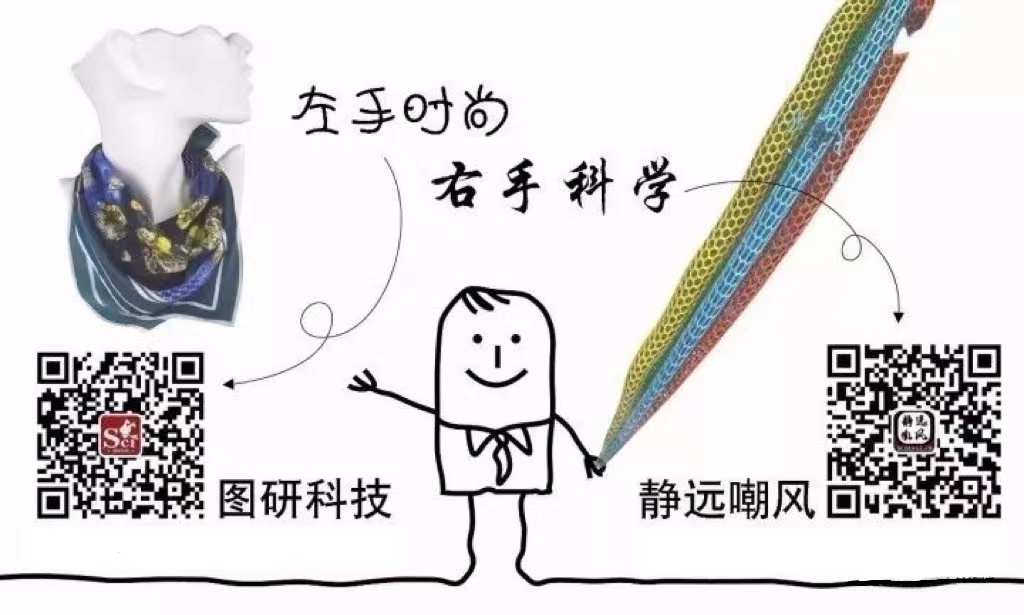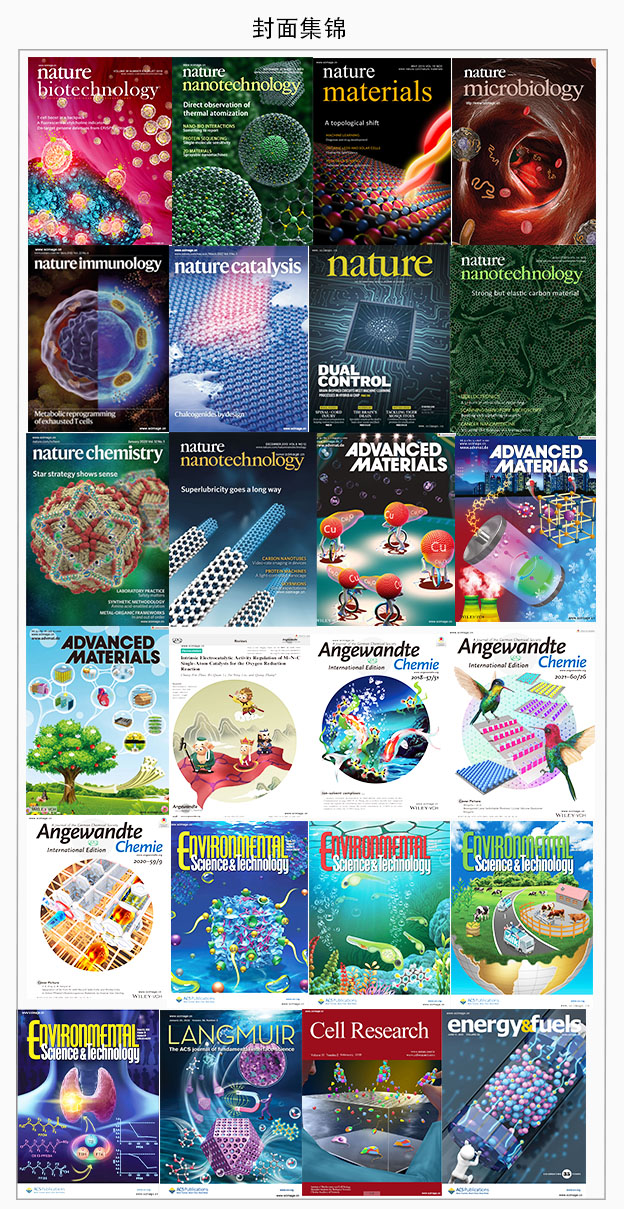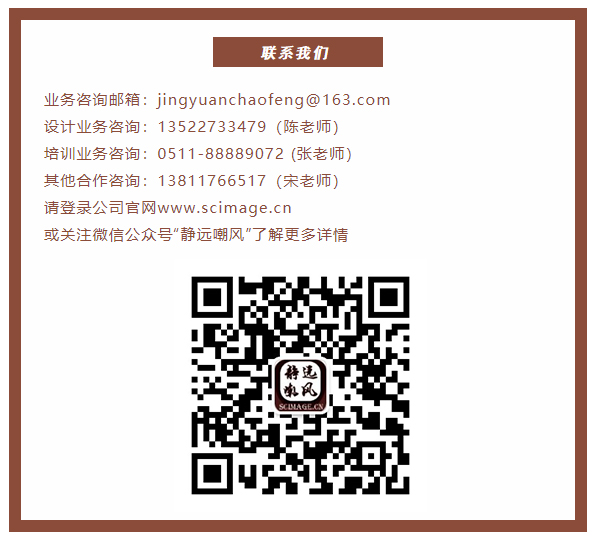博文
2013年静远嘲风封面合集(五)
||

▲ Vol 01 Issue 36 | September 28 2013
Polymer brush-functionalized surfaces with unique reversible double-stimulus responsive wettability
Wei Sun, Shuxue Zhou, Bo You and Limin Wu
This paper presents the first fabrication of smart films with unique reversible double-stimulus responsive wettability. In this method, the ABC-type triblock copolymers synthesized through the sequential living radical polymerizations of 2-(diisopropylamino)ethyl methacrylate (DPAEMA), 2-hydroxyethyl methacrylate (HEMA), and (4-(2-methylacryloyloxy) ethyloxy-4′-trifluoromethoxy) azobenzene (MAAZO) mediated by a reversible addition–fragmentation chain transfer (RAFT) process, were grafted onto the surfaces of SiO2 films through the reactions between the hydroxyl groups of the PHEMA middle segments and the acyl chloride groups of the SiO2 film surfaces to form specific V-shaped polymer brushes, leaving highly free PDPAEMA and PMAAZO chains. The as-obtained V-shaped polymer brush-functionalized film exhibited a peculiar reversible double-stimulus responsive wettability, which was triggered only by the joint action of pH and UV light irradiation rather than either single stimulus. This unique wettability should be attributed to the changes of the chemical state of functional groups and the distribution of surface polymer brushes under different stimuli.
https://pubs.rsc.org/en/content/articlelanding/2013/ta/c3ta12367g

▲ Vol 01 Issue 29 | August 07 2013
A guanidine derivative of naphthalimide with excited-state deprotonation coupled intramolecular charge transfer properties and its application
Jin Zhou,Huiying Liu,Bing Jin,Xiangjun Liu,Hongbing Fub and Dihua Shangguan
A new fluorophore based on guanidine substituted 1,8-naphthalimide was synthesized and characterized. In aqueous solution, the guanidine group undergoes deprotonation/protonation with a pKa of ~8.5 in the ground-state and ~0.9 in the excited-state. The emission of its protonated and deprotonated forms exhibits a large Stokes shift (Ex/Em: 350/460 nm and 400/580 nm) due to the excited-state intramolecular charge transfer (ICT) process. The protonated form of this fluorophore exhibits dual fluorescence emission (Em: 460 and 580 nm; Ex: 350 nm) that is contributed to by an excited-state deprotonation coupled ICT process. The emission properties of this fluorophore are strongly dependent on the solvent environment, which make it possible to tune the luminescence of the materials made using this fluorophore. The absorption and emission spectra of this fluorophore respond to fluoride ions ratiometrically, showing the potential application as a fluoride ion sensor.
http://pubs.rsc.org/en/content/articlelanding/2013/tc/c3tc30853g#!divAbstract

▲ Vol 01 Issue 32 | August 28 2013
Surface hydrophobicity of microparticles modulates adjuvanticity
Yuan Liu, Ying Yin, Lianyan Wang, Weifeng Zhang, Xiaoming Chen, Xiaoxiao Yang, Junjie Xu, Guanghui Ma
Polymeric microparticles are promising adjuvants and they exhibit various physicochemical characteristics that can regulate the immune response, including hydrodynamic size, morphology, and surface properties, among others. Surface hydrophobicity is also a key microparticle characteristic, but how it affects microparticle adjuvanticity remains unknown. To study the correlation between microparticle hydrophobicity and adjuvanticity in-depth, we prepared poly(D,L-lactic acid) (PLA)-, poly(D,L-lactic-co-glycolic acid) (PLGA)-, and poly(monomethoxypolyethylene glycol-co-D,L-lactide) (mPEG-PLA, PELA)-based microparticles by premix membrane emulsification, which were similar in size and morphology but differed in surface hydrophobicity. We then systematically evaluated their ability to induce immune responses in vitro and in vivo. Increased surface hydrophobicity on PLA-based microparticles greatly promoted antigen internalization into dendritic cells (DCs) as well as MHC II and CD86 expression on DCs in vitro. Similarly, in vivo studies showed that increased microparticle surface hydrophobicity significantly elevated cytokine secretion levels by splenocytes harvested from vaccinated mice. Adhesion force measurements confirmed that increased surface hydrophobicity enhanced the physical interaction between microparticles and cell membranes, a condition favorable for promoting microparticle internalization into cells. Taken together, these results indicated that microparticle hydrophobicity is an important factor that determines the magnitude of immune responses elicited by vaccination with different particulate systems.
http://pubs.rsc.org/en/content/articlelanding/2013/tb/c3tb20383b#!divAbstract

▲ Vol 15 Issue 37 | October 07 2013
Cu2O–CuO composite microframes with well-designed micro/nano structures fabricated via controllable etching of Cu2O microcubes for CO gas sensors
Li Zhang, Zhimin Cui, Qiong Wu, Dan Guo, Yue Xu and Lin Guo
Composite materials with well-designed structures have been extensively explored to enhance their sensing performances. Here, through a simple “top-down” chemical etching approach, Cu2O–CuO composite microframes were fabricated with many nanometer-sized branch-like nanorods distributed on the surfaces and edges. The structure evolution was monitored and the synergistic process of the oxidation effect and Kirkendall diffusion was proposed to explain the formation mechanism of the structure. The Cu2O–CuO microframes show enhanced gas sensing properties towards CO with a lower detection limit, a higher sensitivity and a shorter response time than pure CuO microcubes and Cu2O microcubes at the working temperature of 240 °C. The enhanced sensing performance of the Cu2O–CuO microframe is probably attributed to the additional depletion layer formed between CuO and Cu2O, as well as the structural advantages of the microframe.
http://pubs.rsc.org/en/content/articlelanding/2013/ce/c3ce40595h#!divAbstract

▲ Vol 25 Issue 40 | October 25 2013
Field Emitters: Epitaxial ZnO Nanowire-on-Nanoplate Structures as Efficient and Transferable Field Emitters (Adv. Mater. 40/2013)
Jizhong Song,Sergei A. Kulinich,Jian Yan,Zhigang Li,Jianping He,Caixia Kan,Haibo Zeng
Novel ZnO nanostructures grown as single epitaxial wires at the centers of nanoplates are prepared with high selectivity via the vapor-phase transport method. These structures possess high field emission properties and are attractive as transferable electron field emitters as demonstrated by Haibo Zeng and co-workers on page 5750.
https://onlinelibrary.wiley.com/doi/10.1002/adma.201370252

▲ Vol 01 Issue 36 | September 28 2013
Superparamagnetic high-magnetization composite spheres with highly aminated ordered mesoporous silica shell for biomedical applications
Zhaogang Teng, Changhui Sun, Xiaodan Su, Ying Liu, Yuxia Tang, Yane Zhao, Guotao Chen, Feng Yan, Nannan Yang, Chunyan Wang and Guangming Lu
Control of the morphology, mesostructure, and surface chemistry of multifunctional materials is important for their applications. We report here the fabrication of multifunctional spheres which possess a silica-coated magnetite core and a highly aminated mesoporous silica shell with radially aligned ordered pore channels. The well-designed core–shell structured spheres have superparamagnetism, high magnetization (32 emu g−1), large surface area (133 m2 g−1), uniform accessible mesopores (3.4 nm), and abundant amino groups on the mesoporous shell. Owing to the presence of the amino groups, the composite spheres exhibit high capacity for convenient connection of fluorescent dyes, which make them promising candidates for applications in various biomedical fields, such as cell imaging and cell sorting. Furthermore, a fibrin-specific magnetic resonance imaging (MRI) contrast agent was successfully prepared by connecting the composite spheres with pentapeptide Gly–Pro–Arg–Pro–Pro, which can significantly increase the MRI signal of thrombus.
https://pubs.rsc.org/en/content/articlelanding/2013/tb/c3tb20844c

▲ Vol 52 Issue 48 | November 25 2013
Growth of Ultrathin Organic Semiconductor Microstripes with Thickness Control in the Monolayer Precision (pages 12530–12535)
Dr. Liqiang Li, Dr. Peng Gao, Dr. Wenchong Wang, Prof. Klaus Müllen, Prof. Harald Fuchs and Prof. Lifeng Chi
semiconductors: Growth of ultrathin (<15 nm), continuous, and microstructured organic semiconductor (OSC) films at monolayer precision is important for organic electronics and a challenging task. Uniform monolayer to hexalayer (ca. 1.6–12 nm; see picture) dendritic OSC microstripes at monolayer precision are grown by a dip-coating process.
http://onlinelibrary.wiley.com/doi/10.1002/anie.v52.48/issuetoc

▲ Vol 52 Issue 07 | February 11 2013
Inside Cover: Two-Way Nanopore Sensing of Sequence-Specific Oligonucleotides and Small-Molecule Targets in Complex Matrices Using Integrated DNA Supersandwich Structures (Angew. Chem. Int. Ed. 7/2013) (page 1842)
Nannan Liu, Yanan Jiang, Yahong Zhou, Prof. Fan Xia, Dr. Wei Guo and Prof. Lei Jiang
DNA supersandwich structures work as gatekeepers for solid-state nanopores as part of a target-specific nanofluidic sensor for both oligonucleotides and small molecules, as shown by F. Xia, W. Guo et al. in their Communication on page 2007 ff. The DNA superstructures enhance the sensitivity and reduce the background signal, so that the biohybrid nanodevice also works well in complex mixtures, such as mammalian serum.
http://onlinelibrary.wiley.com/doi/10.1002/anie.v52.7/issuetoc

▲ Vol 52 Issue 13 | March 25 2013
Inside Back Cover: Ultratough Artificial Nacre Based on Conjugated Cross-linked Graphene Oxide (Angew. Chem. Int. Ed. 13/2013) (page 3775)
Prof. Qunfeng Cheng, Dr. Mengxi Wu, Prof. Mingzhu Li, Prof. Lei Jiang and Prof. Zhiyong Tang
An artificial nacre based on graphene oxide sheets is presented by Q. F. Cheng, M. Z. Li, Z. Y. Tang et al. in their Communication on page 3750 ff. This ultratough material shows excellent mechanical properties and a hierarchical microstructure. The bioinspired strategy involves a new concept for fabricating artificial nacre for such applications as aerospace, flexible supercapacitor electrodes, artificial muscles, and tissue engineering.
http://onlinelibrary.wiley.com/doi/10.1002/anie.v52.13/issuetoc

▲ Vol 49 Issue 34 | May 04 2013
Multi-responsive nitrobenzene-based amphiphilic random copolymer assemblies
Hao Wu, Jie Dong, Cancan Li, Yibiao Liu, Ning Feng, Liping Xu, Xiaowei Zhan, Huai Yang and Guojie Wang
A photo-, acid- and thermo-responsive nitrobenzene -based amphiphilic copolymer was synthesized and the corresponding multi-responsive behavior of the copolymer assemblies was revealed by TEM , DLS and AFM . The morphological changes of the assemblies under multi-stimuli endowed them with a controlled release of encapsulated molecules.
http://pubs.rsc.org/en/content/articlelanding/2013/cc/c3cc39043h#!divAbstract

▲ Vol 42 Issue 14 | July 21 2013
Heteroarenes as high performance organic semiconductors
Wei Jiang, Yan Lia and Zhaohui Wang
The design, synthesis, and characterization of new organic semiconductors (OSCs) are important aspects for the development of next-generation optoelectronic devices. Structurally, organic semiconductors based on π-conjugated molecules can be easily modified via rational synthesis to tune multi-level self-assembled structures and discover novel chemical, optical, and electronic properties. Heteroarenes, which contain chalcogens and nitrogens in fused aromatic rings, are being developed as promising semiconducting materials for applications in a variety of electronic devices due to their outstanding optoelectronic properties. We highlight recent approaches toward realizing high performance p-channel field effect transistors based on linear heteroacenes and heteroatom annulated polycyclic aromatics (PAHs) as key functional components. These comprehensive, but carefully orchestrated approaches simultaneously address (i) practical synthesis, (ii) tunable self-assembled packing arrangement as well as (iii) high electronic performance.
http://pubs.rsc.org/en/Content/ArticleLanding/CS/2013/C3CS60108K#!issueid=cs042014&type=current&issnprint=0306-0012

▲ Vol 42 Issue 13 | July 07 2013
Molecule–electrode interfaces in molecular electronic devices
Chuancheng Jia and Xuefeng Guo
This review highlights the importance of the nature of the molecule–electrode interface to the conducting properties of molecules.
http://pubs.rsc.org/en/journals/journalissues/cs#!issueid=cs042013&type=current&issnprint=0306-0012

▲ Vol 15 Issue 27 | July 21 2013
Biomimetic fabrication and tunable wetting properties of three-dimensional hierarchical ZnO structures by combining soft lithography templated with lotus leaf and hydrothermal treatments
Shuxi Dai, Dianbo Zhang, Qing Shi, Xiao Han, Shujie Wang and Zuliang Du
Hierarchical ZnO films with lotus-leaf-like structures and tunable wettability were fabricated via biomimetic routes combining soft lithography and hydrothermal treatments.
http://pubs.rsc.org/en/journals/journalissues/ce#!issueid=ce015027&type=current

▲ Vol 01 Issue 25 | July 07 2013
Bio-inspired protein–gold nanoconstruct with core–void–shell structure: beyond a chemo drug carrier
Xiangyou Liu, Wei Wei, Shijiao Huang, Shrong-Shi Lin, Xin Zhang, Chuanmao Zhang, Yuguang Du, Guanghui Ma, Mei Li, Stephen Mann and Ding Ma
An apoferritin–gold–fluorouracil nanocomposite exhibits significantly enhanced anticancer efficacy and potentially reduced side effects compared with free 5-FU.
https://pubs.rsc.org/en/content/articlelanding/2013/tb/c3tb20081g

▲ Vol 01 Issue 47 | December 27 2013
Perpendicularly entangled perylene diimides for high performance electron transport materials
Linxiao Hao, Chengyi Xiao, Jing Zhang, Wei Jiang, Wei Xu and Zhaohui Wang
A new family of perpendicularly entangled perylene diimides has demonstrated remarkable electron transport characteristics with comparable mobility reaching 0.16 cm2 V−1 s−1 with better processability and low threshold voltage.
http://pubs.rsc.org/en/journals/journalissues/tc#!issueid=tc001047&type=current&issnprint=2050-7526

▲ Vol 08 Issue 12 | December 2013
Superlubricity in centimetres-long double-walled carbon nanotubes under ambient conditions
Rufan Zhang,Zhiyuan Ning,Yingying Zhang,Quanshui Zheng,Qing Chen,Huanhuan Xie,Qiang Zhang,Weizhong Qian & Fei Wei
Superlubricity occurs when friction between two sliding surfaces almost vanishes. This phenomenon has been observed so far only for small specimens that are a few micrometres wide at most. Yingying Zhang and colleagues have now observed superlubricity between centimetre-long concentric carbon nanotubes (schematically shown on the cover), which was made possible by a synthesis method that allows the production of pure carbon nanotubes that are several centimetres long.
http://www.nature.com/nnano/journal/v8/n12/covers/index.html

▲ Vol 15 Issue 13 | April 07 2013
Five-fold twinned pentagonal gold nanocrystal structure exclusively bounded by {110} facets
Tengjiao Liu, Peng Jiang, Qi You and Shufeng Ye
Monodispersed five-fold twinned pentagonal gold nanocrystals exclusively bounded by {110} facets have been synthesized by a seed-mediated wet chemical method.
http://pubs.rsc.org/en/journals/journalissues/ce#!issueid=ce015013&type=current
<静远嘲风动漫传媒科技中心>设计制作

购书链接:
☆科学的颜值:学术期刊封面故事及图像设计
https://item.jd.com/12802188.html
☆科技绘图/科研论文图/论文配图设计与创作自学手册:CorelDRAW篇
https://item.jd.com/13504674.html
☆科技绘图/科研论文图/论文配图设计与创作自学手册:Maya+PSP篇
https://item.jd.com/13504686.html
☆科技绘图/科研论文图/论文配图设计与创作自学手册:科研动画篇
https://item.jd.com/13048467.html#crumb-wrap


静远嘲风(MY Scimage) 成立于2007年,嘲风取自中国传统文化中龙生九子,子子不同的传说,嘲风为守护屋脊之瑞兽,喜登高望远;静远取自成语“宁静致远”,登高莫忘初心,远观而不可务远。



https://m.sciencenet.cn/blog-519111-1363866.html
上一篇:2013年静远嘲风封面合集(四)
下一篇:《科学的颜值》系列课堂开讲啦